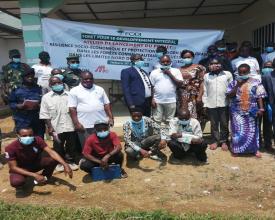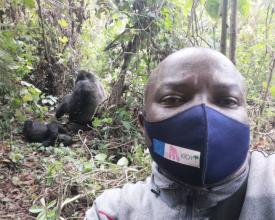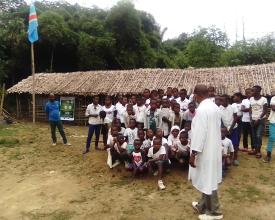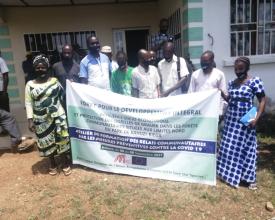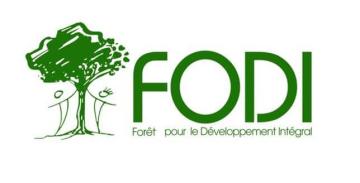
Conservation of Grauer's gorillas and chimpanzees in local community forest concessions (CFCL) in the DRC during Covid19
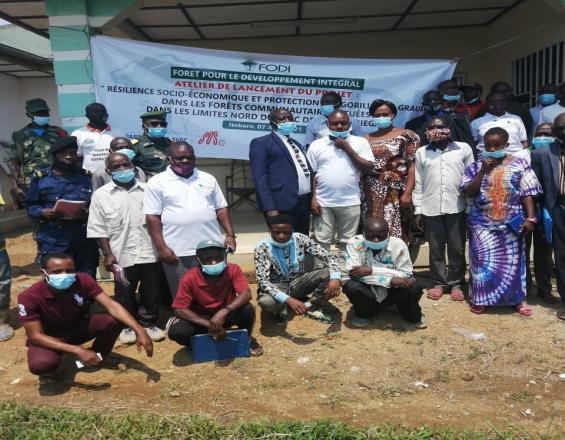
Like humans, Grauer's gorillas and chimpanzees in CFCLs bordering Kahuzi-Biega National Park in the Democratic Republic of Congo have been threatened by Covid19. To prevent future cases of contamination, FODI obtained financial support from IUCN SOS to train community relays and forest monitors in barrier measures against Covid19 and single health in order to prevent future pandemics. Thanks to the awareness-raising work carried out by the community relays, the communities have improved their hygiene systems by practicing barrier measures, and the monitors have used the equipment and knowledge they have learned to reduce the risk of Covid19 contamination of gorillas and chimpanzees. The project distributed rabbits to communities to improve their socio-economic conditions. The project is part of IUCN's Save Our Species African Wildlife initiative, co-funded by the European Union.
Context
Challenges addressed
Our project consisted in raising community awareness of Covid 19 and training forest monitors to avoid contaminating gorillas and chimpanzees with Covid 19. The challenge was also how to facilitate communities' access to animal protein during this crucial period.
Location
Impacts
- 37 individuals of the gorillas in the Banisamasi and Basengele CFCLs protected from Covid 19, i.e. an estimated 0.54% of the global population of Grauer's gorillas, based on the recent WCS publication estimating the global gorilla population at 6,800 individuals.
- at 78 chimpanzee individuals have been impacted by our project, if we consider the recent nests identified in the four CFCLs as those whose individuals who built them are still living in the CFCL, then we can estimate that our work has affected the global chimpanzee population to the tune of 0.15% if we consider that the world chimpanzee population is 51273, according to the IUCN publication Schweinfurth's Chimpanzee (Pan troglodytes schweinfurthii), Species Conservation Status and Action Plan 2010-2020.
- The area covered by patrols has increased from around 35% to more or less 85% of the integral conservation areas on the 70,000 hectares concerned.
- On the socio-economic front, the project has provided 150 households with pairs of rabbits.
- 32 forestry monitors have been trained in unique health techniques to prevent future pandemics.
- 2,973 people were reached by awareness-raising sessions, including 1,385 women who improved their hygiene in the face of the Covid 19.

